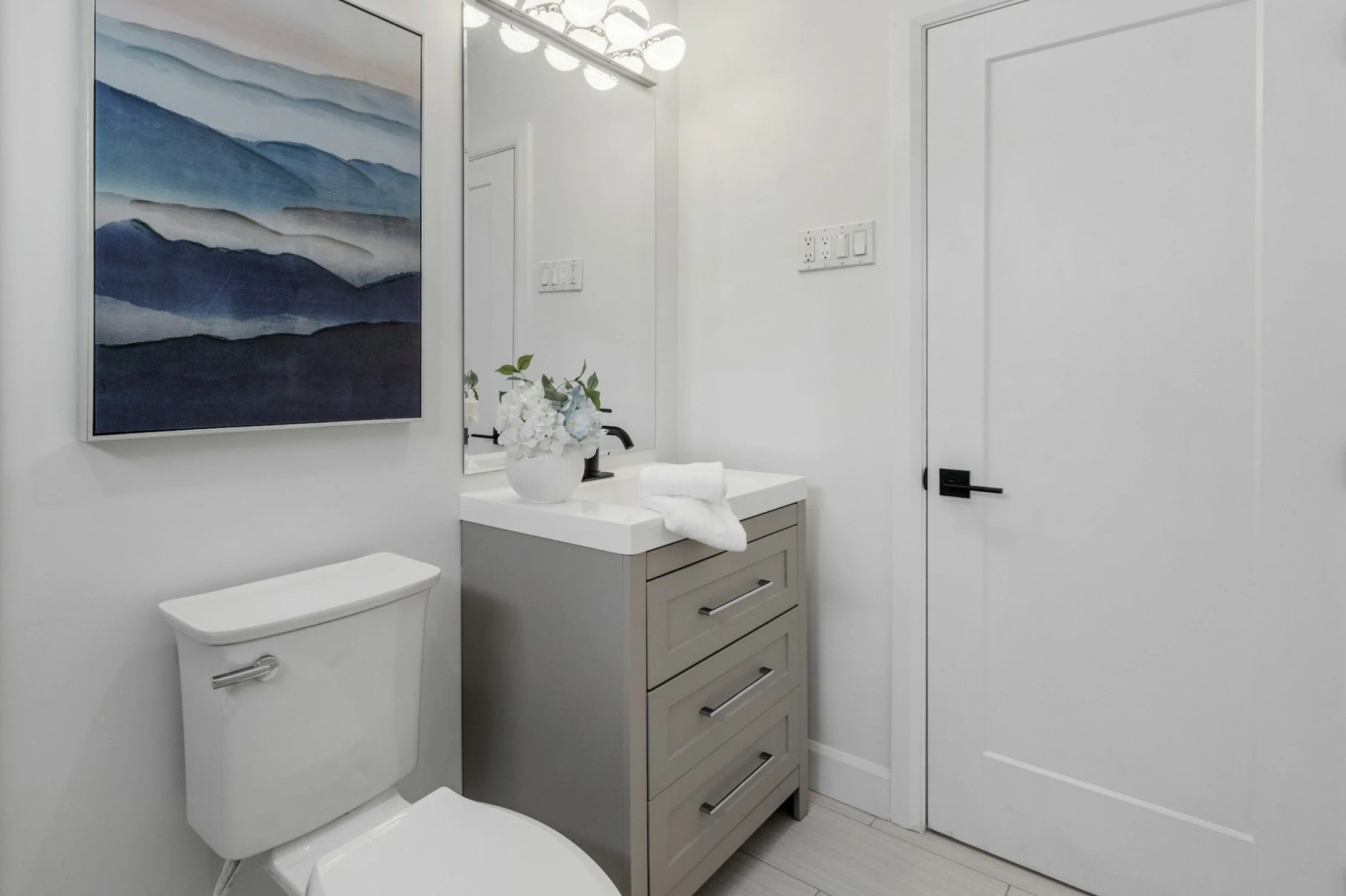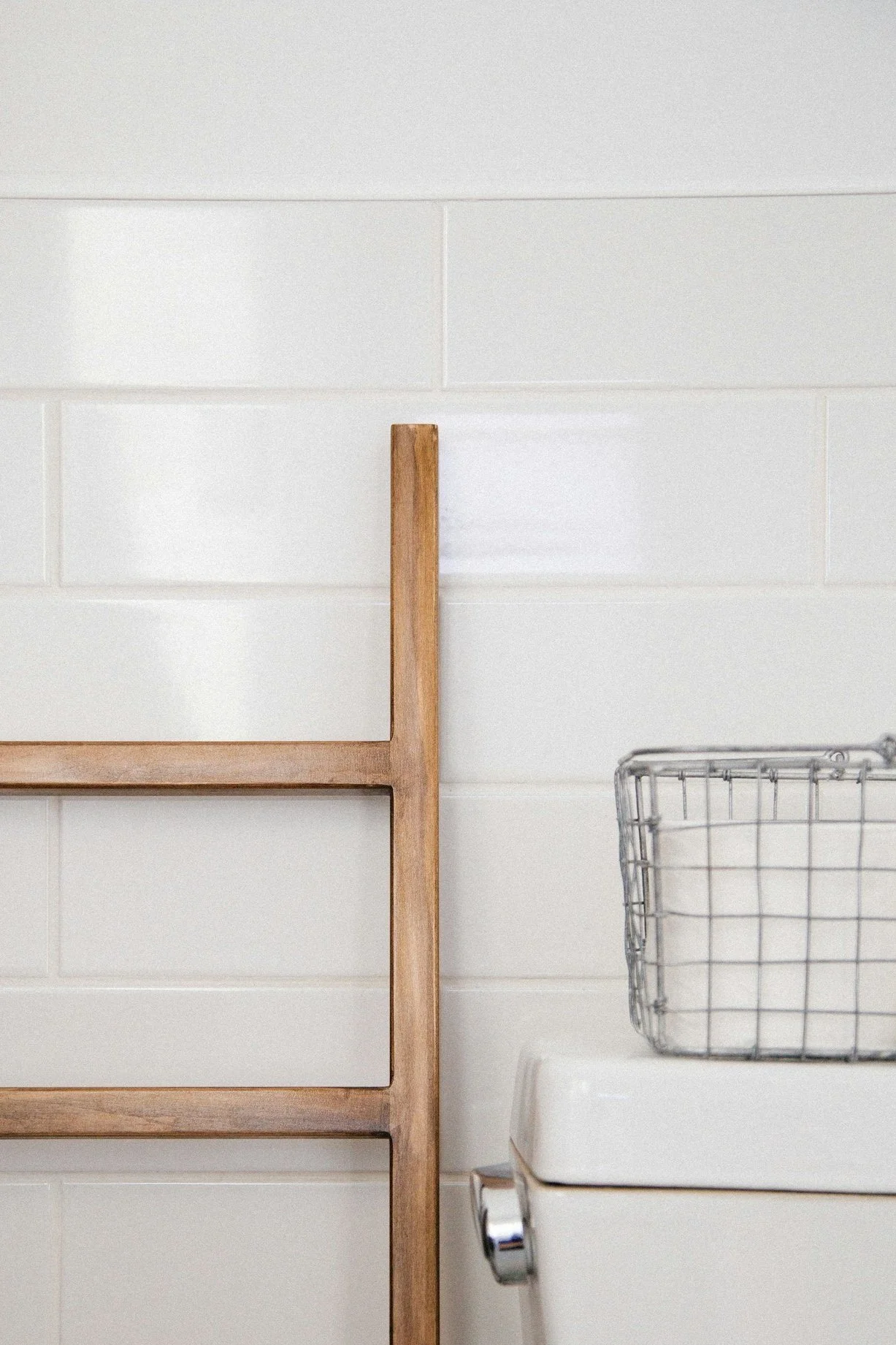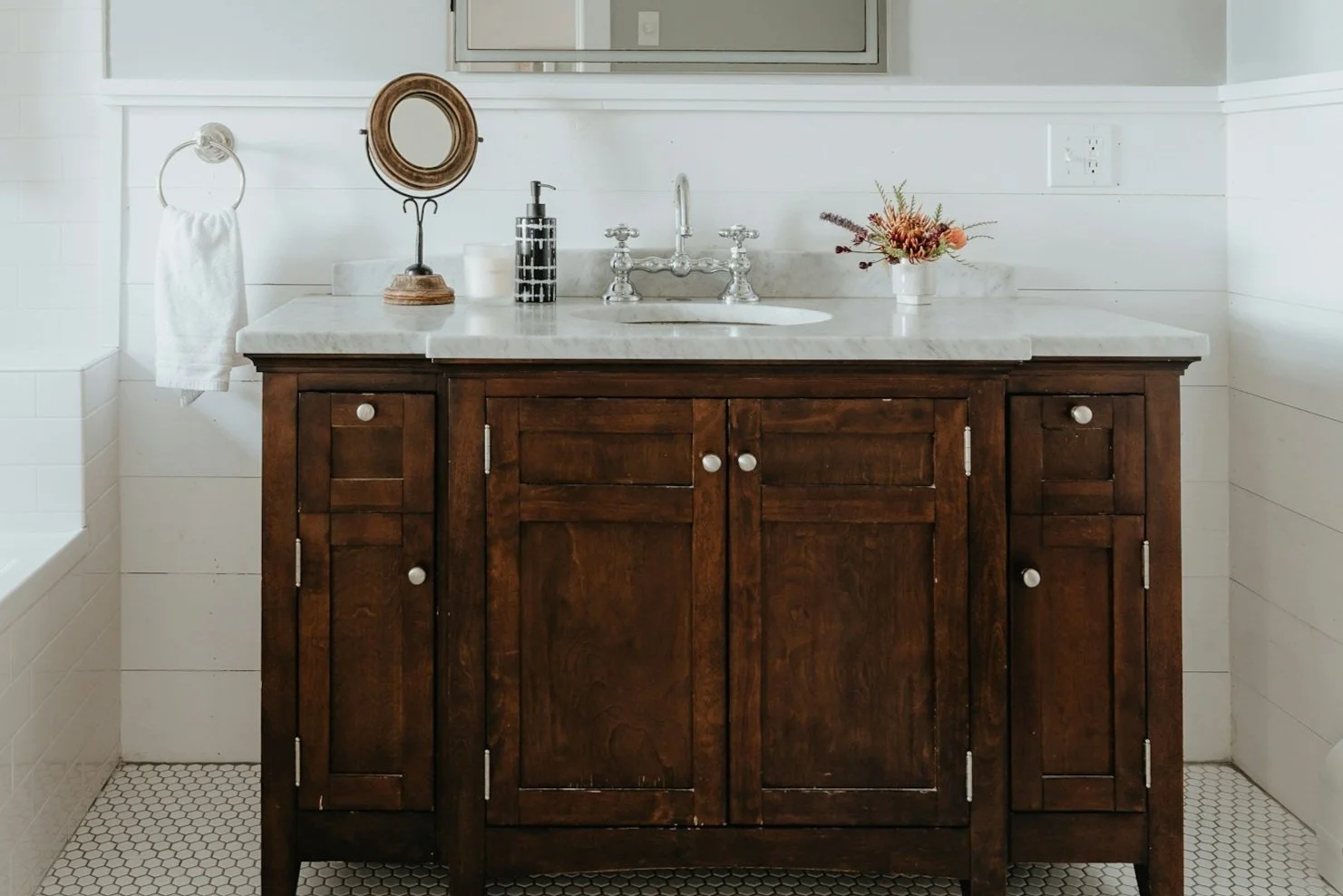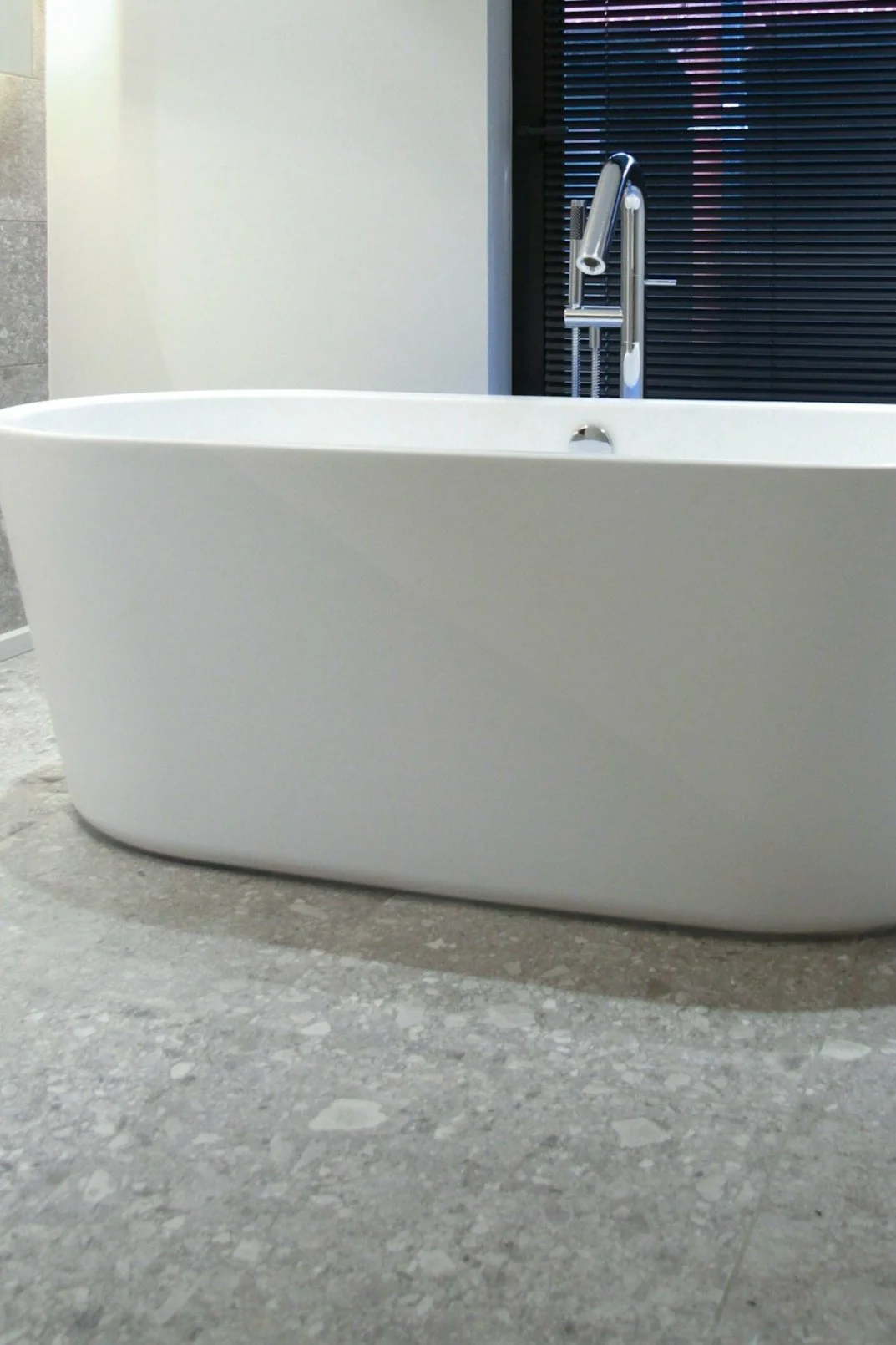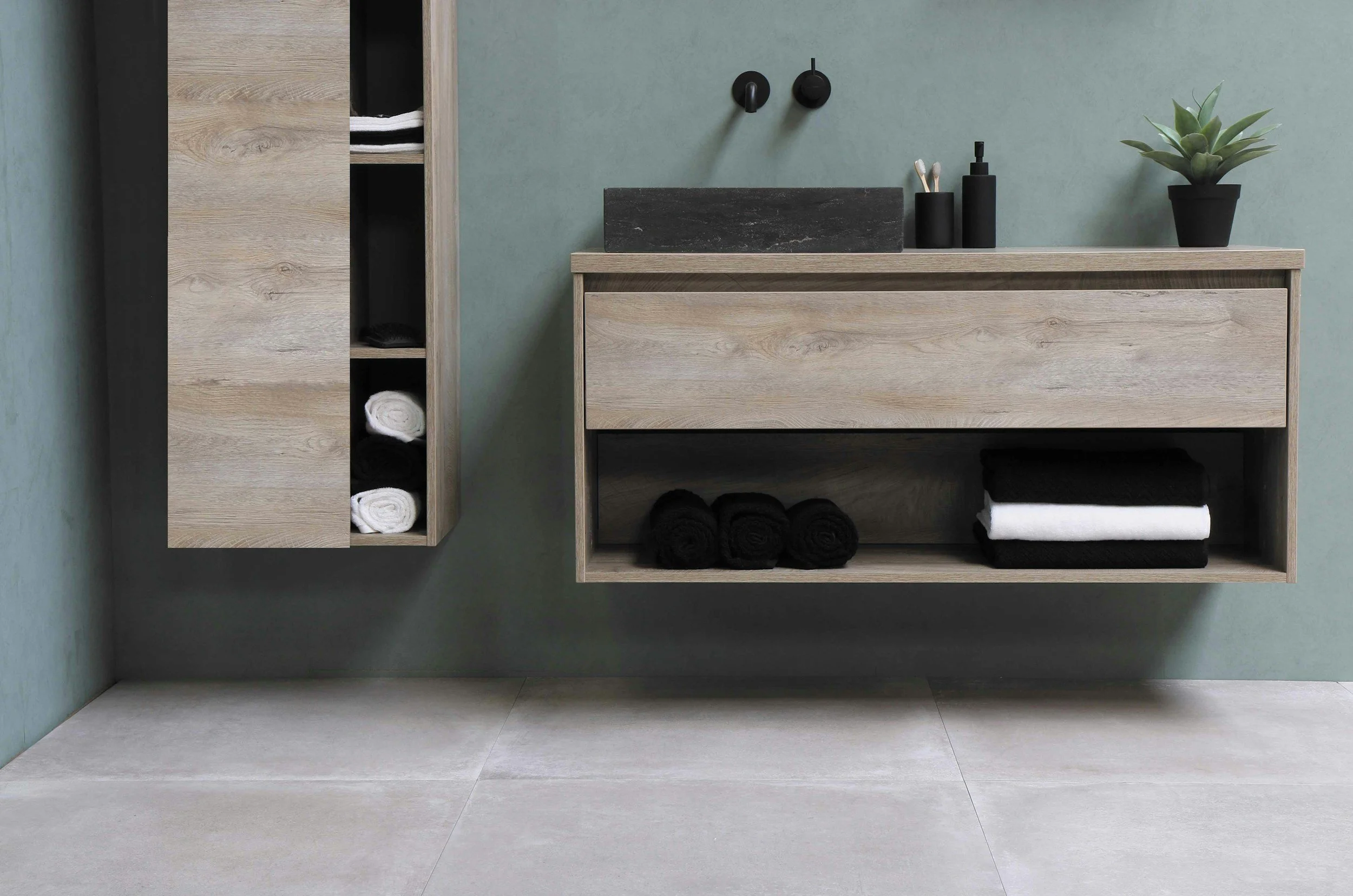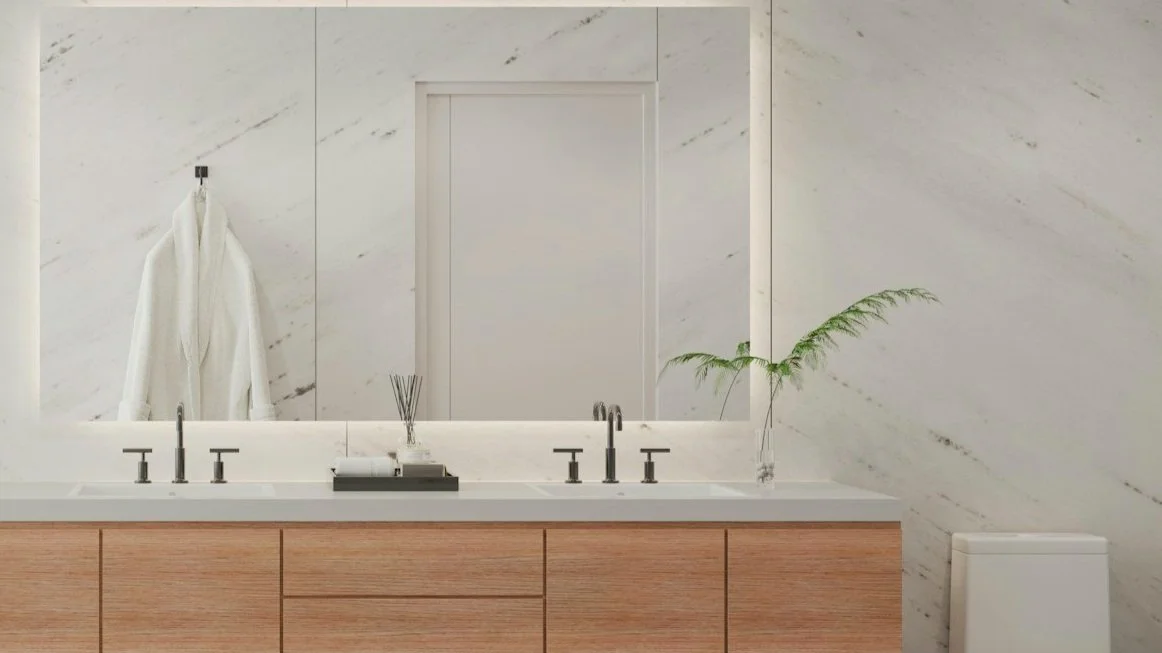Bathroom Cost NJ
How much does a bathroom remodel cost in NJ?
Skip to the bottom of this post if you’re looking for “ballpark” prices without information on what goes in to estimating total cost.
In general, renovations cost less than remodels. Renovation can range from minor (repainting walls) to major projects (retiling shower surround).
The cost to remodel a bathroom depends on a few things:
Size of the bathroom
Cost of materials
Labor and scope of work
Quality of bathroom features (toilet, sink, shower, etc.)
Quality of fixtures (faucets, shower head, etc.)
Bathroom size.
Half bathroom with two piece toilet and single vanity.
Half bath / powder room (15-30 sq ft)
¾ bathroom (35-40 sq ft)
Full bathroom (40-60 sq ft, larger bathroom may be 80-120+ sq ft)
Master bathroom / “en suite bathroom”
Half bathrooms, also called powder rooms, lack showers and tubs. These are simple bathrooms with a sink and toilet for use by visitors.
¾ bathrooms and full bathrooms, sometimes called guest bathrooms, usually contain 3 features: a toilet, a sink, and a shower or tub.
Primary bathrooms are bathrooms which connect to the largest room of the house. These often are the most expensive to remodel. Homeowners generally choose higher end features and fixtures for their personal bathroom. There are a variety different features and materials to help you fit cost to budget.
Scope of work.
It is important to clearly define what you want your end product to look like. Are you looking to “spruce up” your bathroom with a few minor renovations, or are you looking for a more significant renovation? Are you looking for a partial remodel involving minor demolition and installation of 1-2 new features, or are looking for a complete remodel in order to add your personal taste to the bathroom. The amount of work you want done will affect the total price.
Quality of materials, features, and type of finish.
Walls.
There are so many possibilities when it comes to bathroom walls. Often the cheapest option is just repainting the existing walls. Something as simple as changing the color of the walls can improve the aesthetics of the room. Adding some wainscot or wallpaper can also be a budget friendly way of revitalizing the bathroom. Cost steps up if you decide to add tile to the wall. There are a many different tiles available, but the most common tiles are ceramic and porcelain. Pricier options, like natural stone, may be used for higher end bathrooms. Large format tiles with thin grout lines can add a “luxurious” feel (and make cleaning easier).
Floors.
Porcelain subway tiles in a small bathroom.
Large format floor tile with thin grout lines.
There are several types of floor material used in modern bathrooms. Cheaper options like linoleum or luxury vinyl plank may be ok in dry areas, but will struggle in wet ones. You may prefer wood flooring or vinyl plank which mimics wood for a more natural look (these materials are usually limited to dry areas). There are a ton of options with tile flooring, but remember that tile is cooler when walking barefoot and can be slippery when wet (non-slip tiles help mitigate this). Tile can even be designed to mimic natural stone. True natural stone tile will elevate your bathroom, but it tends to be more costly and requires more maintenance.
Vanity and countertops.
Wood vanity with single sink.
Bathroom vanities can be refinished or refaced to cut costs. For new vanities, premade items are easy to install and are very functional. They usually come with built in storage. A single vanity is often found in small bathrooms, and double vanities are usually found in larger ones. Powder rooms may only be big enough to fit a pedestal sink. A custom vanity will cost more than a pedestal or premade model. Floating vanities are good at making small bathrooms appear larger.
The perfect countertop for your vanity is waiting for you. There are budget friendly countertops like laminate and fiberglass, and there are more costly countertops like tile or natural stone. Each countertop material has its own pros and cons. It is important to discuss these with an experienced contractor. Quartz countertops are some of the most popular and durable countertops available. Solid surface countertops are seamless and often more budget friendly.
Porcelain freestanding bathtub.
Features.
It is important to consider what types of features you will include in the bathroom. The cost of your sink, toilet, shower, and tub (or shower/tub combination) will vary based on the type and quality. A more compact one piece toilet will often cost more than the traditional two piece toilet. Similarly, freestanding tubs will usually cost more than a prefabricated tub or a prefabricated tub/shower combination. Curbless walk-in showers with ledges and shower niches will cost more than a basic acryl shower.
Fixtures.
Most basic bathrooms will come with simple fixtures. Fixtures can be upgraded to give your bathroom a more elegant feel. The price of hardware varies with quality and manufacturer.
Storage.
Storage is one of the most important considerations in your bathroom remodel. Bathrooms with inadequate storage often look cluttered and unorganized. There are so many options to improve on the storage in your bathroom. Adding floating storage elements can take advantage of “dead space” on your walls. Different types of cabinets can be added to the room to improve storage capacity.
Lighting and Plumbing.
Lighting and plumbing work will add to the total cost of your bathroom. Layout changes requiring plumbing can raise the price significantly. The same goes for electrical work. That being said you may want to drastically alter the bathroom layout to open up space. You may want to add things like under vanity strip lights or backlighting to mirrors to improve on your current lighting.
Double vanity with large backlit mirror.
Accessories.
Bathroom accessories like towel warmers, heated floors, benches, floating elements, and mirrors can add to your bathroom remodel. Medium and large size mirrors have been trending recently. You may want a mirror that doubles as a medicine cabinet. You may want a backlit mirror for better lighting in the area.
Labor.
Labor costs will depend on the amount of work to be done and the complexity of that work. Projects that involve multiple contractors (plumber, electrician, carpenters, GC, etc.) will of course cost more. It is also important to remember that if you skimp on talent you will see it in your results (slippage, cracks, chips, uneven grout lines, water pooling, etc.). Labor will usually make up 40-60% of the total project cost.
Please see our blog post Bathroom Materials 101 to get a better idea of material options and price variability.
how much does a bathroom renovation cost in Nj?
When considering all of the above factors you can see why there is so much variability in the cost of bathroom renovation.
To help you manage expectations you can expect the following “ballpark” prices:
Basic (budget) bathroom upgrades (minor/major renovations): 1,000-18,000
Midrange renovations/remodels (partial remodels): 18,000-35000
High end renovations/remodels (full remodel): 35000+
Luxury remodel (total remodel or gut remodel): 50000+'
I’m working on a tight budget. How can I keep costs down?
Consider DIY if you are able to properly perform the work. Some DIY (painting) is easier than others (natural stone tiling).
Try to refresh a bathroom with several minor (less costly) renovations.
Keep bathroom features basic.
Use simple, budget hardware.
Use prefabricated features, less costly materials, and stock vanities/items.
Limit tile work
Limit layout changes.
Avoid moving water supply and drainage lines


